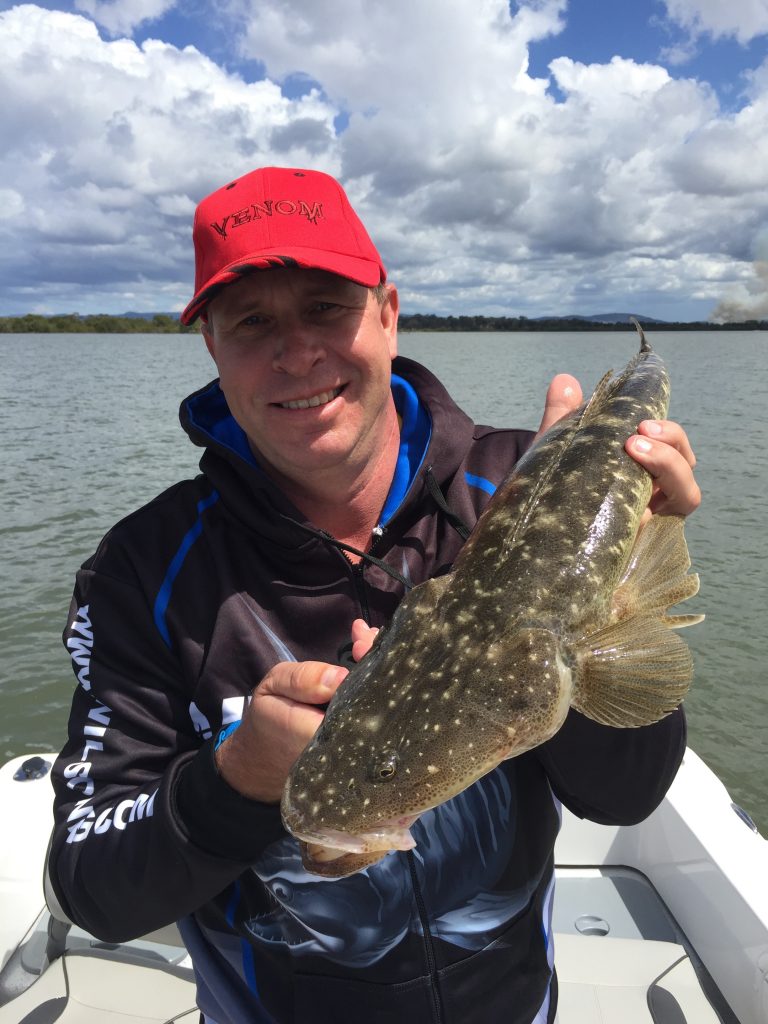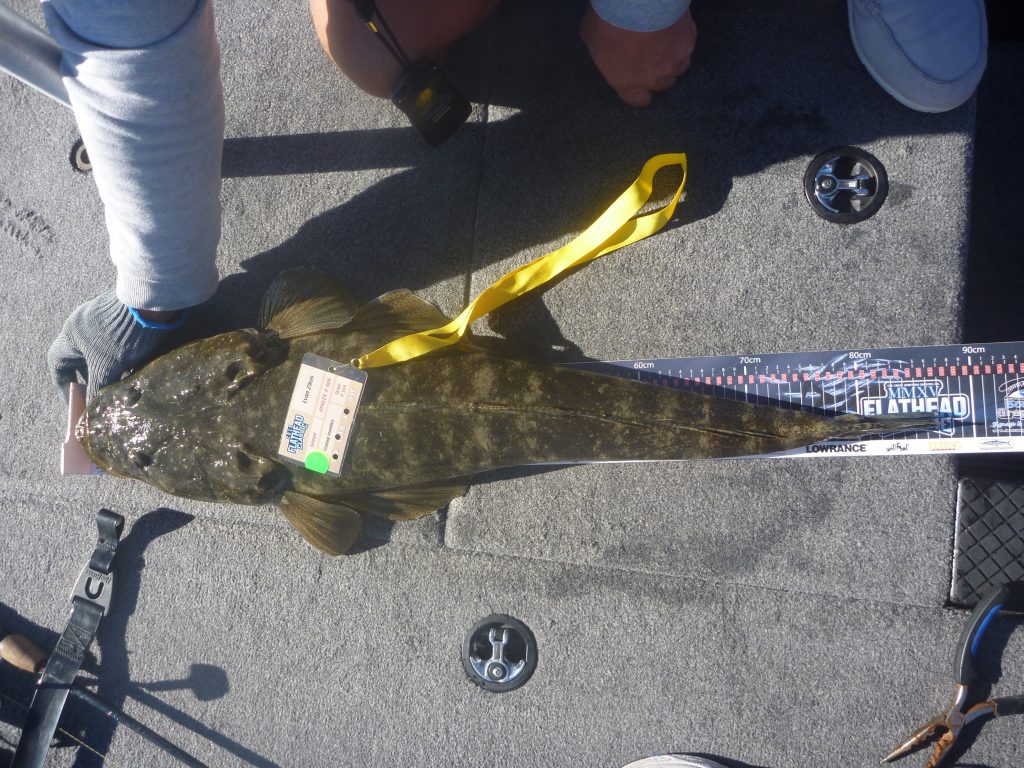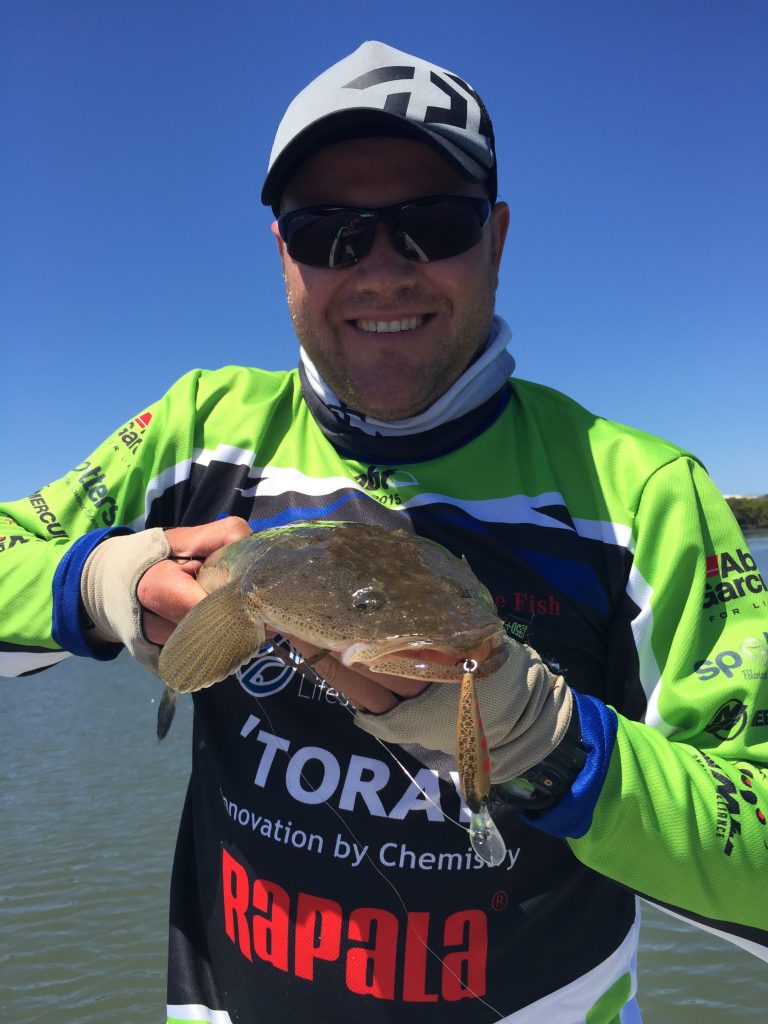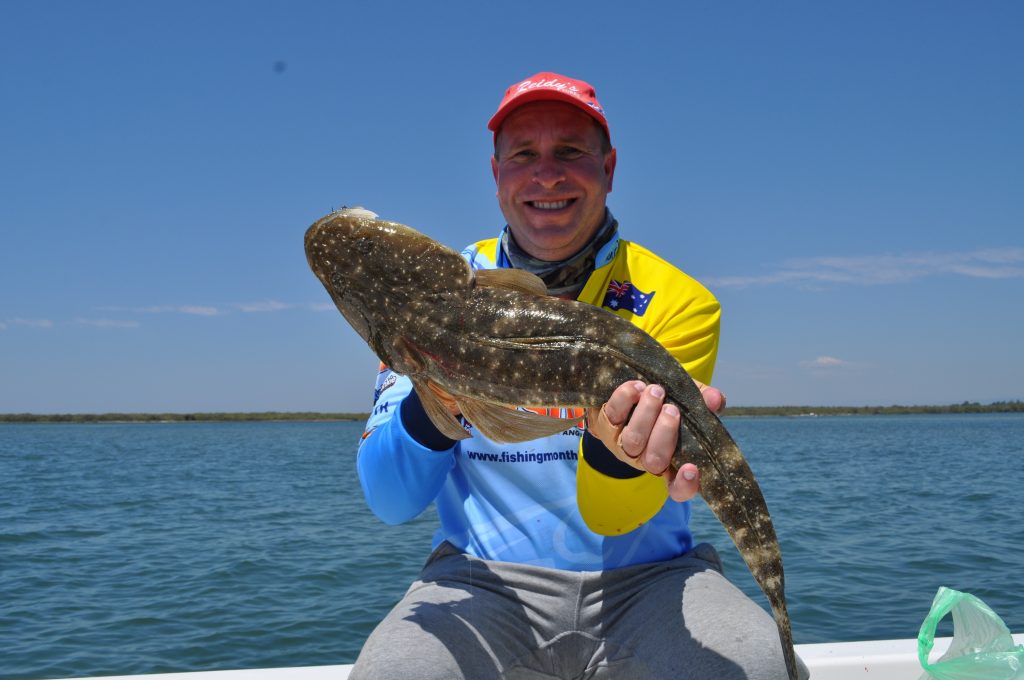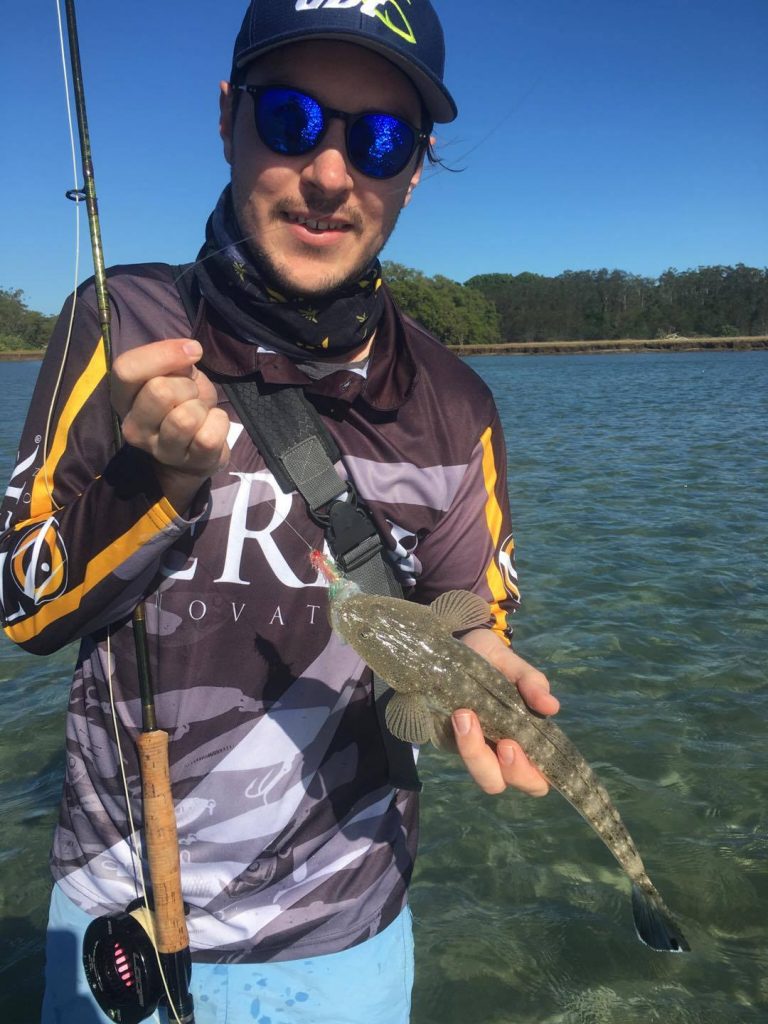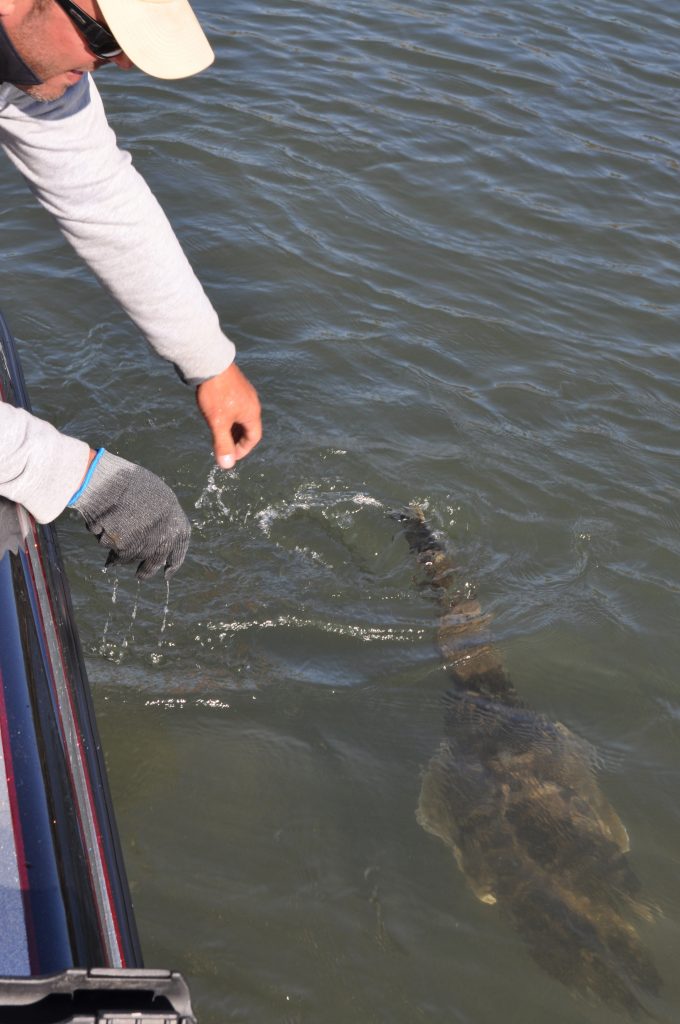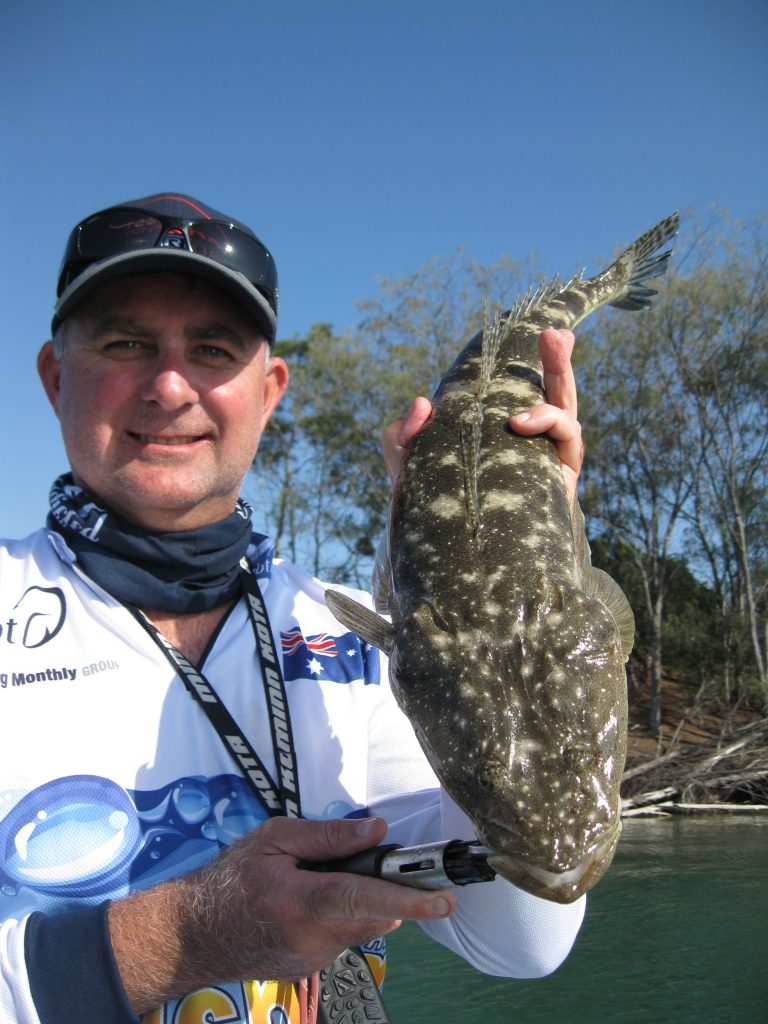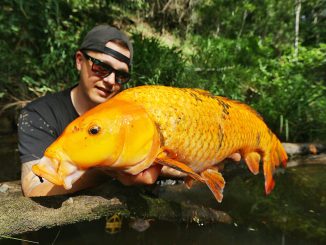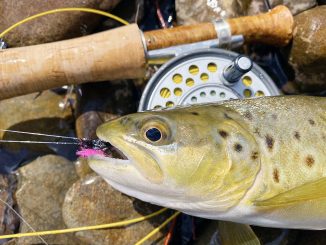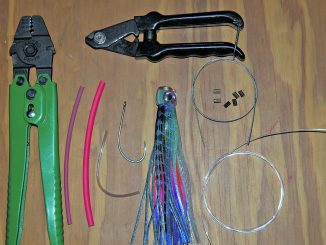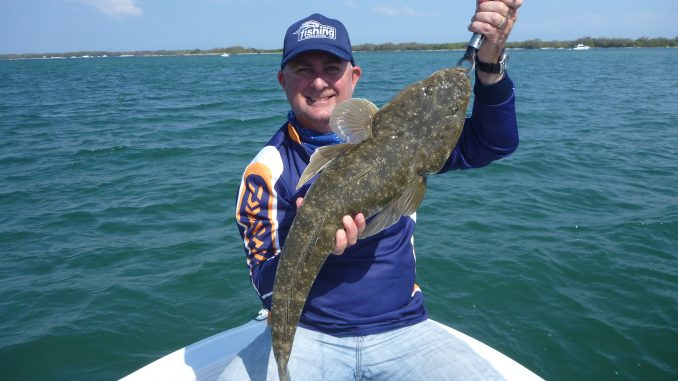
by Bob Thornton •
We’re finally at that stage along the east coast where the weather is warming but the water is still cool, and for the estuarine angler this can only spell one thing – dusky flathead!
Whether or not you’re planning to fish the famous Gold Coast Flathead Classic this year, I’m sure you’ll be keen to hear what’s hot in the world of flathead fishing. I’m going to go through some of the innovative techniques that emerged around last year’s Classic, and also touch on some proven methods of fooling flatties. There are many species of flathead, but this article will focus on dusky flathead.
UNDERSTANDING FLATHEAD
Tides
Anyone who has spent a bit of time chasing flatties will tell you that they don’t mind getting up real shallow, especially if there’s food up there for them. But exactly how shallow should you go? And at what stage of the tide?
As a general rule, the high tide will see them hanging out over flats that would otherwise be high and dry at low tide. During this time, they will be spread out, so it goes without saying that an angler needs to cover water to find them.
As the tide drops away, however, flathead will feel more comfortable sitting in the channels and holes, preferably with current running into them. The mouths of creeks and drains are classic points of ambush for our flat-headed friends, and they’re seldom alone in their ceaseless search for food, with other predators like bream, tailor and trevally often hanging out in these same places.
Terrain
The type of bottom is something that some anglers fail to take into consideration, but it should be one of the first things you assess when you pull up to a spot!
Hard sand, with no yabby holes or any rock or mud is usually a pass for me. I find flatties don’t like stuff that’s hard to bury themselves in. Additionally, these barren areas offer nothing for small aquatic life like baitfish, crustaceans or cephalopods, which flathead eat.
I usually like something with a bit of softness. Squishy sand, or even mud, with yabby holes and uneven topography is perfect for flatties, and a bit of structure in the form of weed, rubble, pylons or even the odd rock is a bonus, and should attract some potential food items.
Behaviour
If you can find areas like the ones mentioned above, and you start catching flathead, there’s one other rule to remember: keep fishing the area! If you catch a flathead at this time of year, even if it’s tiny, it should have others around it. If you’re lucky enough, you may find yourself locking horns with a big female. During the spring months in South East Queensland and northern NSW, groups of sub-legal male flathead will congregate around a single big female in the hope of mating with her.
A single large female can have dozens of tiny little boyfriends that she could eat (and probably does) if she wanted to, so keep casting in an area that’s producing, even if what you’re catching is small!
LURES
All the tried and tested lures we’ve been using for flathead for years are still working incredibly well, and we’re also saturated with new gear to choose from. It’s just a matter of finding lures that suit your fishing style, and this is where a little trial and error can come in.
Diving lures
Diving lures from Lively Lures, Zerek, Lucky Craft, Rapala, Attack Lures, RMG and many others still work very well for flathead, particularly when trolled. Divers can also be cast, and provide a very easy method of covering water, particularly in shallower water.
Soft plastics
Soft plastics are also still catching many flathead, and recent years have seen so many different plastics added to the range we already had. Shad-styles, creature baits, paddle-tails, curl-tails, twin-tails, jerk shads, flukes and grubs will all work – it’s just a matter of fishing them with the correct weight.
With my plastics, I tend to fish as light as I can get away with, taking depth and current into account. Plastics that plummet to the bottom look less natural and don’t give the plastic the fall time that flathead like, as they’ll often scoff a plastic on the drop.
Vibration baits
Vibration baits have become a stalwart in flathead anglers’ boxes in recent years, in both the hard and soft varieties, and there’s so many to choose from now. Once we only had vibes in small sizes, but now they range from tiny bream-sized options to stuff designed for impoundment barra, so whatever the situation, you should be able to find a vibe or blade for your needs.
Surface lures
Believe it or not, surface lures can actually be an entertaining and sometimes effective method of catching flathead, especially in shallow water. Flathead are implosion feeders, so they make quite a commotion when they eat a topwater offering. Next time the water gets a bit shallow, make sure you give it a peppering with a popper or small walking bait – you might be surprised.
Fluff
Who could forget the fluff chuckers? Flyfishing for flathead is incredibly effective if you go about it in the right way. In my opinion, you only need one type of fly for flatties, and that’s the Clouser Minnow in a variety of colours and weights.
Sure, some anglers experiment with different patterns like bendback style flies, and various shrimp and crab imitations, but the Clouser has one thing that is advantageous to a flathead angler – it’s simple. Flathead chew flies, and having something that is both cheap to buy or tie yourself is a big plus. Additionally, they ride hook point up, which makes them slightly more user-friendly to use around structure.
Other presentations
I’ve done a fair bit of experimentation over the years, and have found flathead aren’t particularly fussy – this is what makes flathead such a great sportfish.
My experimentation has led me to try lures such as flippin’ jigs, spinnerbaits, swimbaits, metal slugs and more. Getting a bit creative can sometimes give you an edge and present the flathead with something they haven’t seen much of.
TECHNIQUES
Trolling
Trolling is of course the best way to rack up numbers of fish, and has won a number of Classics in recent times. Despite the opinion that it is an easy ‘cop out’ technique, there are a number of subtleties that go into making a seasoned troller.
Experimenting with different amounts of line out the back of the boat can be beneficial, particularly with lures of different sizes and diving capabilities. I know some people who like to troll lures around 3-4m back, basically in the prop wash! Others prefer to send their lures to around 30m back, so as not to spook the fish with the boat.
A good way to hedge your bets is to fish two smaller presentations around 20m back, and have a larger diver in the middle only 4-6m back to dredge up the bottom and create some commotion.
It may be obvious, but when trolling for flathead, you want your lure making at least occasional contact with the bottom, whether you’re trolling a bibbed lure, a soft plastic or a vibe.
While rough terrain can be good for flathead, it can be frustrating to troll through, with constant hang-ups and snagging. The trick is usually to find a balance between uneven ground that harbours bait and a barren, featureless sandy shoal.
Remember, as with all trolling, you’re steering the lure, not the boat. Always be aware of where your lure is and put it where you think the fish are, and watch the flathead start coming over the gunwale!
Casting
This is perhaps the most popular method of tangling with flatties, and for good reason. Casting for flathead is a very active style of fishing, and often it can be very visual as well.
Any areas with water running over or off them, such as sand bars, drains or creek mouths are excellent places to cast at. Casting into the shallows and bringing your lure into the deeper water with the current is about as deadly as it gets, as flathead sit and wait for their quarry to be brought to them.
Big and obvious pieces of structure can also hold good numbers of flathead. Snag piles and pylons can be good places to fish, as they often hold bait. Small baitfish like to use big pieces of structure to escape the current, and this will in turn attract the larger predators. Even in the shallowest of water, these current-breaking baitfish havens can hold flathead. Always work the front and back sides of these structures.
Fishing deep is another way to cast for flathead, and is a relatively new technique, made popular by the Whyte brothers, who won a Classic a few months back. Using a high-tech sounder, anglers can find structure and bait in deep water, and hopefully larger flathead will be in the area.
Another technique that has emerged recently has been fishing the super shallow water with huge soft plastics, sometimes up to 9” long! By working long muddy flats gliding these huge jerkshads just off the bottom, anglers have found some massive fish in the 90cm+ range. Franco Martinese, who won the individual competition in the Classic last year, told me big flathead will sometimes get airborne while attacking the lure when fishing this way. I’ve no doubt this technique will feature heavily in this year’s Classic!
Flyfishing
As a bit of a fluff-knuckle myself, I feel I need to add in that this is a worthy technique. I’ve already spoken about flies, so now it’s time for the technique.
You can essentially fish fly the same way you would when casting in shallow water, but waiting for the fly to sink can be tiresome work, particularly in strong current and with wind. Where the fly is most deadly is in shallow flats, shallower than 1m, where an angler can get away with using a floating line and a long, tapered leader. With the sink time required, a flyfisher can walk or motor his or her way along a flat, covering water with probably the most natural artificial presentation available. In areas of high boat traffic and angler pressure, this can bring a lot of solid flathead undone.
GO FORTH
Thousands of people, whether fishing the Flathead Classic or not this year, will hit the water in search of flathead in the coming weeks, because it’s such an enjoyable pastime, and accessible to so many people – you don’t even need a boat!
Each year, inventive and innovative anglers set the scene for what’s going to be the coolest way to fish for flathead for the next year. Who knows what it will be this year?

